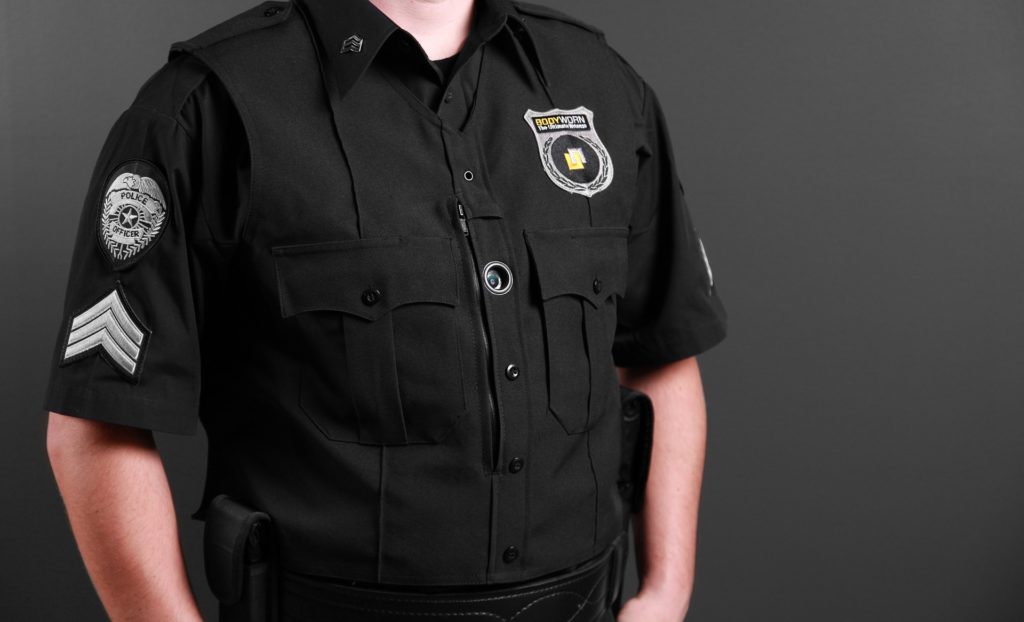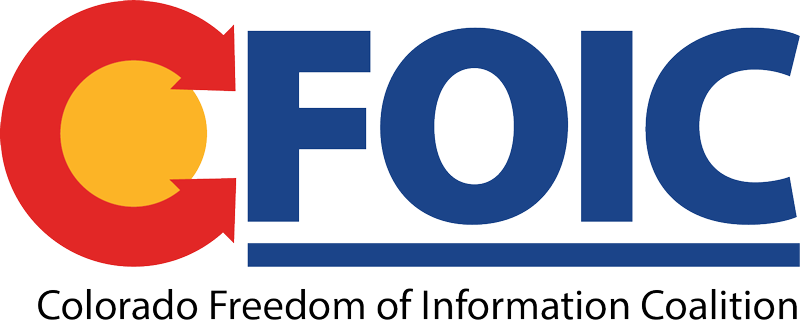The following article originally appeared in Communications Lawyer and is published here with permission from the American Bar Association.
By Steve Zansberg
CFOIC President
An unarmed Black man is brutally murdered by police, who are utterly indifferent to his repeated pleas for restraint. First the people in that city, then across the nation (and, eventually, across the globe) take to the streets. They demand justice. They demand accountability. And they call upon the police, not only in that city but across the nation, to reform their practices, to eliminate racial profiling and overly aggressive militaristic responses, and to become more transparent — including by publicly releasing body-worn camera recordings of police-public confrontations.
You probably surmised that the victim described above was George Floyd, who was killed at police hands in Minneapolis on Memorial Day 2020. But it was not. It was Michael Brown; the city was Ferguson, Missouri, and it was August 2014. Here’s what I wrote on this subject in 2016:
Beginning with the murder of Michael Brown in Ferguson, MO, the in-custody death of Freddie Gray, in Baltimore, MD, and several subsequent high-profile deaths (primarily of African American men) at the hands of police, the conduct of America’s law enforcement has been the focus of intense public interest and attendant media attention. In December 2014, President Obama urged Congress to provide 75 million dollars to deploy 50,000 Body Worn Cameras (“BWCs”) as part of an effort to restore the public’s trust. Although several police departments across the nation had earlier deployed BWCs, the political pressure caused by these events greatly accelerated the trend toward widespread BWC adoption.
That was the previous iteration of what we have all seen unfold, again in 2020, in the aftermath of the horrific suffocation death of George Floyd by Minneapolis police. The transcript of the BWC recordings of the officers involved showed that Floyd, like Eric Garner before him, had cried out — more than 20 times — “I can’t breathe.”

In the six years since Michael Brown’s death, nearly 8,000 police departments across the nation have outfitted their officers with BWCs. Minneapolis’s police department was among them, and although it was “citizen journalism” (cell phone footage) that exposed Floyd’s murder to the public, the BWC footage of Floyd’s encounter with the police that resulted in his death, released by court order in August, shed further light on the unjustifiable conduct of the officers.
Following months of protests and civil disturbances in response to Floyd’s killing, and only one week after the August 23, 2020, shooting of Jacob Blake by police in Kenosha, Wisconsin, the January 2020 suffocation death of an unarmed Black man, Daniel Prude, at the hands of police in Rochester, New York, came to light. How? Prude’s family had obtained the BWC footage capturing the incident, some six months earlier, and they released it to local television stations, causing it to go viral. On September 8, 2020, Rochester’s chief of police resigned, and his entire command staff either resigned or was demoted. As of this writing, a grand jury is considering whether to file criminal charges in Prude’s death, which the medical examiner ruled a homicide. The understandable public outrage upon seeing the BWC recording of Prude’s death was yet another entry into the long and continuing string of such incidents. On October 26, 2020, Philadelphia police fired 14 rounds, killing a mentally ill Black man, Walter Wallace Jr.; that shooting death sparked another round of public protests.
Continued incidents of police abuse require real substantive change, including greater transparency
The factors contributing to the spate of police killings and maiming of Black and Hispanic men and women are many, variegated, and deeply rooted. And, as has been reported elsewhere, the public protests in response to Floyd’s killing galvanized legislators in several jurisdictions to adopt significant reform of policing practices, including barring the use of chokeholds, eliminating sovereign immunity for officers, diversifying both the rank and file and departmental leadership, and adding additional training of police academy cadets and seasoned veteran officers.
One additional reform that will greatly contribute to building public trust in the men and women in blue is to increase transparency; it is universally understood that public trust is a necessary precondition for effective law enforcement. If communities are to respect the pronouncements of internal investigations bureaus, commanders, police chiefs, and mayors, the public must be able to “see for themselves” what actually transpired at the time in question. As former Chief Justice Warren Burger famously put it, “People in an open society do not demand infallibility from their institutions, but it is difficult for them to accept what they are prohibited from observing.” And Justice Harry Blackmun once wrote, “Public confidence cannot long be maintained where important … decisions are made behind closed doors and then announced in conclusive terms to the public, with the record supporting the [agency’s] decision sealed from public view.”
So, while law enforcement personnel may view BWCs primarily as a tool for evidence gathering in investigating crimes — and they do — the vital role that BWC footage can play in holding officers accountable to the public they serve, and thereby fostering public trust, cannot be overstated.
Where do things stand today?
More cameras mean more footage. Many more police departments are using BWCs today than were doing so in 2014. According to the Department of Justice’s (DOJ) Bureau of Justice Statistics, by 2016, nearly half (47 percent) of the 15,328 general-purpose law enforcement agencies in the United States had acquired BWCs. From FY2016 to FY2020, Congress appropriated $112.5 million for a grant program under the DOJ to help law enforcement agencies purchase BWCs. One set of researchers estimates that the number of law enforcement agencies with BWC programs more than doubled from 2013 to 2018.
In 2018, California became only the third state in the nation (following South Carolina in 2015 and Nevada in 2017) to require that all police departments in the state deploy BWCs. Notably, after the killing of George Floyd, four more states — Colorado, Connecticut, New Mexico, and New York — have mandated that all police departments deploy BWCs. As a result, there are now many more BWC recordings of police-“civilian” interactions than six years ago, dramatically increasing the stock of BWC recordings that are potentially available for public viewing.
Legislative changes. Several excellent online sources track the deployment and implementation of BWC programs, including transparency, but none (as of this writing) has been updated in 2020 to capture recent developments.
In a previous Communications Lawyer article published in 2016, and a handout I prepared for a boutique session at the Media Law Resource Center’s “Virginia Conference” later that year, I surveyed laws in Connecticut, Florida, Georgia, Illinois, Kansas, Louisiana, Minnesota, New Hampshire, North Carolina, North Dakota, Oregon, South Carolina, and Texas, all of which restricted public access to BWC recordings. I also lauded Oklahoma and the city of Seattle, Washington, for their pro-access legal regimes. Overall, my conclusion at that time was “state legislators have given much greater weight to the concerns of civilians’ privacy rights and to protecting ongoing criminal investigations from interference than to the transparency and public accountability benefits of providing public exposure to recordings of official police conduct.”

In the last three years, several jurisdictions have made significant progress in providing public access to police BWC recordings. In March 2017, Utah Governor Gary Herbert signed into law H.B. 381, which subjects all police BWC recordings to that state’s open records law. In late 2018, California’s legislature enacted, and former Governor Jerry Brown signed, Assembly Bill 748, which (beginning on July 1, 2019) requires not only that all police departments in the state be equipped with BWCs, but also that they release “critical incident” BWC recordings within 45 days of the recorded incident.
In early 2020, Wisconsin’s legislature passed 2019 S.B. 50, which mandates that BWC recordings must be retained for a minimum of 120 days after the incident recorded, and longer if the incident involved the use of force by an officer. That bill, signed into law by Governor Tony Evers on February 28, 2020, requires that BWC recordings be subject to inspection and release pursuant to the state’s open records act and requires that prior to releasing any recording of “a sensitive or violent crime,” the identity of any victim or minor be redacted “using pixelization or another method of redaction,” unless the affected individual (or his/her guardian) consents. A record requester may challenge the degree of any such redaction in court under the open records act.
In the aftermath of George Floyd’s killing and the nationwide demonstrations it triggered, several legislators and governors took swift action. On June 15, 2020, Connecticut’s Governor Ned Lamont signed Executive Order No. 8 — “Police Use of Force and Accountability,” which requires that every Connecticut State Trooper wear a BWC (and every state patrol car be equipped with a dashboard camera), by January 1, 2021. Governor Lamont also declared that state police should release BWC video within four days of the recorded incidents.
On June 19, 2020, Colorado’s Governor Jared Polis signed Senate Bill 217, which, when it goes into effect in 2023, will enact far-reaching reforms to police practices, including barring chokeholds and eliminating sovereign immunity for officers. The new law also mandates that BWCs be worn by all Colorado police officers and sheriff’s deputies and requires that the cameras be activated whenever an officer interacts with a member of the public; failure to record such an interaction gives rise to an adverse inference of police misconduct in any subsequent court proceeding. Lastly, the new law upends the current discretionary withholding standard for release of BWC recordings, mandating that all unedited recordings of those interactions be publicly released within 21 days of the filing of a complaint regarding the police conduct at issue.
In July 2020, the D.C. Council passed, and Mayor Muriel Bowser signed, an emergency resolution that mandates public release of all BWC recordings of the D.C. Metro Police within five days. Shortly thereafter, the union representing District of Columbia police officers went to court seeking an injunction barring the release of BWC recordings. On August 12, 2020, D.C. Superior Court Judge Hiram Puig-Lugo denied the union’s request to enjoin the release of BWC recordings under the new law.
Finally, on September 20, 2020, New York State Attorney General Letitia James announced that her office will expedite and proactively release (in advance of any request) police BWC footage in all cases of law enforcement misconduct investigated by her office.
Court victories. The D.C. Superior Court ruling was only one of several recent judicial decisions affirming the public’s right to inspect police BWC recordings.
In January 2018, a coalition of news organizations successfully obtained access, under Nevada’s public records law, to approximately 750 hours of BWC recordings made by Las Vegas Metropolitan Police officers on duty the night of October 1, 2017, when gunman Stephen Paddock shot and killed 58 people and wounded 412 others attending the Route 91 Harvest Music Festival from his hotel room at the Mandalay Bay Resort. The news organizations’ motion seeking recovery of their attorney’s fees for successfully pursuing that litigation, which is provided for by the Nevada Public Records Act, is pending as of this writing.
In February 2019, the First Department of New York’s Appellate Division held that BWC recordings are not exempt from disclosure as “personnel records” exempt from New York’s Freedom of Information Law. Although New York has subsequently repealed the statutory exemption for police “personnel files,” the earlier decision should have persuasive force in other jurisdictions where such exemptions remain in place:
“We find that given its nature and use, the body-worn-camera footage at issue is not a personnel record …”
“The purpose of body-worn-camera footage is for use in the service of other key objectives of the program, such as transparency, accountability, and public trust-building.”
“Although the body-worn-camera program was designed, in part, for performance evaluation purposes, and supervisors are required, at times, to review such footage for the purpose of evaluating performance, the footage being released here is not primarily generated for, nor used in connection with any pending disciplinary charges or promotional processes … The footage, here, rather, is more akin to arrest or stop reports, and not records primarily generated for disciplinary and promotional purposes. To hold otherwise would defeat the purpose of the body-worn-camera program to promote increased transparency and public accountability.”
In January 2020, the New Jersey Court of Appeals similarly ruled that BWC recordings are not exempt from disclosure under that state’s “ongoing criminal investigation” exemption.
In May 2020, California’s Supreme Court ruled that police departments could not charge records requesters for the staff time spent redacting BWC footage prior to producing it in response to a request under California’s Public Records Act.
Conclusion: Progress is being made, but greater transparency is still needed. The six years since the killing of Michael Brown in Ferguson, Missouri, has seen a dramatic expansion in the deployment of BWCs across the nation. This relatively short experiment has yielded mixed results regarding how the deployment of BWCs affects the conduct of officers in interacting with the public. Of course, the high-profile incidents in which officers have disrespected, mistreated, and even killed people of color — even while their own and other officers’ BWCs were in operation — does not, in my view, disprove the hypothesis that public scrutiny of officers’ behavior through access to BWC recordings will, over time, have a beneficial effect. It is reasonable to assume that as the officers whose conduct has been publicly exposed lose their jobs, and, in appropriate cases, are convicted and sent to jail, other officers will alter their conduct, going forward.
But equally importantly, a separate positive function is performed by providing public access to BWC recordings: It allows the public independently to scrutinize the conduct of their public servants, captured in real time (despite the limitations of those recordings), and thereby helps instill public trust in those institutions. Conversely, withholding BWC recordings from public scrutiny only exacerbates suspicions and thereby inflames the public distrust currently besetting the nation’s law enforcement community. New York’s appellate court said it best: Denying the public’s ability to access BWC recordings “would defeat the purpose of the body-worn-camera program.
CFOIC president Steve Zansberg is a Denver-based First Amendment and media lawyer.
Follow the Colorado Freedom of Information Coalition on Twitter @CoFOIC. Like CFOIC’s Facebook page. Do you appreciate the information and resources provided by CFOIC? Please consider making a tax-deductible donation.




